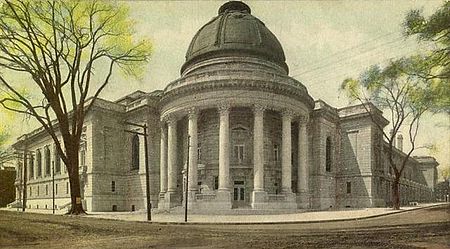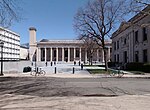Woolsey Hall
1901 establishments in ConnecticutBeaux-Arts architecture in ConnecticutCarrère and Hastings buildingsMusic venues in ConnecticutTourist attractions in New Haven, Connecticut ... and 2 more
Woolsey familyYale University buildings

Woolsey Hall is the primary auditorium at Yale University, located on the campus' Hewitt Quadrangle in New Haven, Connecticut. It was built as part of the Bicentennial Buildings complex that includes the Memorial Rotunda and the University Commons, designed by the firm Carrère and Hastings for the Yale bicentennial celebration in 1901. With approximately 2,650 seats, it is the university's largest auditorium and hosts concerts, performances, and university ceremonies including the annual freshman convocation, senior baccalaureate, and presidential inaugurations. The building is named for Theodore Dwight Woolsey, President of Yale from 1846 through 1871.
Excerpt from the Wikipedia article Woolsey Hall (License: CC BY-SA 3.0, Authors, Images).Woolsey Hall
College Street, New Haven
Geographical coordinates (GPS) Address Nearby Places Show on map
Geographical coordinates (GPS)
| Latitude | Longitude |
|---|---|
| N 41.311111111111 ° | E -72.925833333333 ° |
Address
493 College Street
College Street 493
06511 New Haven
Connecticut, United States
Open on Google Maps






